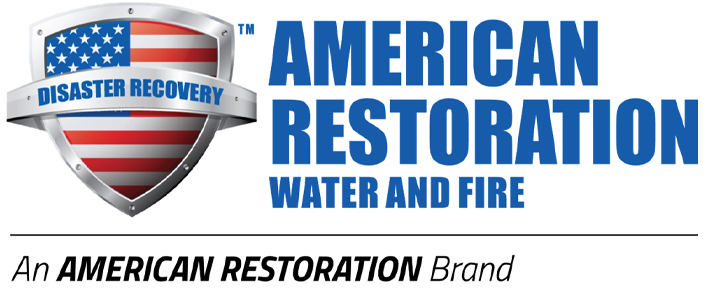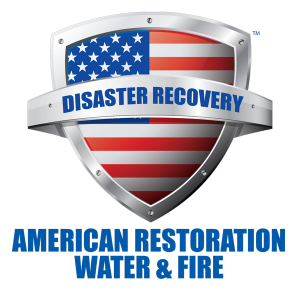Mold Awareness Month serves as a pivotal reminder of the persistent threat of mold growth, especially following fire incidents. This designated month aims to inform individuals about the risks associated with mold and the importance of proactive measures. Raising awareness about mold after fires becomes imperative due to the potential health and property hazards it poses.
Mold spores released into the air post-fire can trigger respiratory issues and allergic reactions, particularly in vulnerable individuals. Moreover, mold growth can compromise the structural integrity of buildings, leading to costly repairs and prolonged displacement for affected individuals. By understanding the importance of raising awareness about mold, communities can take proactive steps to minimize exposure and mitigate its impact on both health and property.
American Restoration Water & Fire’s dedication to education further amplifies the significance of Mold Awareness Month. As a leading advocate in post-disaster recovery, American Restoration Water & Fire’s commitment to raising awareness about mold underscores the critical importance of understanding its risks and implementing preventive measures.
Understanding Mold
What is mold?
Mold is a type of fungus that thrives in damp and humid environments. It reproduces by producing tiny spores that are invisible to the naked eye and can easily become airborne. Mold can grow on various surfaces, including walls, ceilings, carpeting, and furniture, often appearing as fuzzy patches of different colors, such as black, green, or white. It plays a crucial role in nature by breaking down organic matter, but indoors, mold can pose significant health risks and damage property.
Common types of mold found after fire damage
Following a fire, certain types of mold are more likely to proliferate due to the moisture and organic material present in the aftermath. Common molds found after fire damage include Aspergillus, Penicillium, and Stachybotrys chartarum (also known as black mold). These molds can quickly colonize damp surfaces and materials, such as drywall, insulation, and wood, leading to widespread contamination if not addressed promptly.
Health risks associated with mold exposure
Exposure to mold spores can trigger a range of health problems, particularly for individuals with respiratory conditions, allergies, or weakened immune systems. Inhalation of mold spores can cause allergic reactions, including sneezing, coughing, and skin irritation.
Prolonged exposure to mold can exacerbate asthma symptoms and lead to respiratory infections. In severe cases, exposure to certain molds, such as Stachybotrys chartarum, can produce toxic substances known as mycotoxins, which may cause more serious health effects, including neurological symptoms, respiratory issues, and immune system suppression. Therefore, understanding the health risks associated with mold exposure is essential for protecting individuals’ well-being in fire-damaged environments.
Mold Growth After Fire Damage
Conditions conducive to mold growth post-fire
The aftermath of a fire creates ideal conditions for mold growth, primarily due to the presence of moisture from extinguishing efforts and the porous nature of fire-damaged materials. Water used to douse flames can seep into walls, floors, and ceilings, creating damp environments conducive to mold proliferation. Additionally, residual humidity and elevated temperatures resulting from the fire can further promote mold growth. Without proper ventilation and drying, these conditions can accelerate mold development, posing additional challenges to the restoration process.
Areas prone to mold growth in fire-damaged properties
In fire-damaged properties, certain areas are particularly susceptible to mold growth. Porous materials, such as drywall, insulation, carpeting, and upholstery, absorb water easily and provide nutrients for mold spores to thrive. Hidden spaces, such as wall cavities, attics, and crawl spaces, are especially prone to mold growth as they may retain moisture and remain undetected during initial inspections. Moreover, fire-damaged structural components, such as wooden beams and framing, can become prime breeding grounds for mold if not properly dried and treated.
Timeline of mold growth post-fire
Mold growth can begin within as little as 24 to 48 hours following a fire incident. In the immediate aftermath, moisture from extinguishing efforts and residual heat create optimal conditions for mold spores to germinate and spread. Within days, visible signs of mold growth may appear on surfaces, manifesting as discoloration, musty odors, or fuzzy patches.
If left unchecked, mold can proliferate rapidly, spreading to adjacent areas and compromising the integrity of building materials. Timely intervention is crucial to prevent further damage and mitigate the risk of health hazards associated with mold exposure. Therefore, understanding the timeline of mold growth post-fire is essential for implementing effective remediation strategies and restoring fire-damaged properties to a safe and habitable condition.
Health Implications of Mold Exposure
Respiratory issues
Exposure to mold can lead to a range of respiratory issues, particularly for individuals with pre-existing conditions such as asthma or chronic obstructive pulmonary disease (COPD). Inhalation of mold spores can irritate the airways, causing symptoms such as coughing, wheezing, and shortness of breath. Prolonged exposure to mold can exacerbate respiratory symptoms and lead to respiratory infections, making it especially hazardous for vulnerable populations.
Allergic reactions
Mold exposure can trigger allergic reactions in susceptible individuals, manifesting as symptoms such as sneezing, nasal congestion, itchy eyes, and skin irritation. These allergic responses occur when the immune system reacts to mold spores as foreign invaders, releasing chemicals such as histamine to combat them. For those with allergies to mold or other allergens, exposure can exacerbate symptoms and decrease overall quality of life.
Long-term health effects
In addition to immediate respiratory and allergic reactions, long-term exposure to mold has been linked to a range of health effects. Chronic exposure to mold spores may contribute to the development or worsening of respiratory conditions, such as asthma or bronchitis. Furthermore, certain types of mold, such as Stachybotrys chartarum (black mold), produce mycotoxins that can have more severe health consequences.
Prolonged exposure to mycotoxins has been associated with neurological symptoms, immune system suppression, and even long-term cognitive impairment. Therefore, understanding the potential long-term health effects of mold exposure is essential for protecting individuals’ health and well-being, especially in environments where mold growth is prevalent.
Importance of Mold Awareness Month
Spreading knowledge and resources
Mold Awareness Month serves as a pivotal opportunity to disseminate essential information and resources regarding mold prevention and mitigation. By raising awareness through educational initiatives and outreach programs, communities gain valuable insights into identifying mold hazards and implementing preventive measures. Accessible resources and expert guidance empower individuals to take proactive steps in safeguarding their health and property from mold-related risks.
Encouraging proactive measures
The observance of Mold Awareness Month encourages proactive measures to mitigate mold-related risks and promote indoor air quality. Emphasizing the significance of moisture control, regular inspections, and prompt remediation, the initiative fosters a culture of prevention and preparedness. Through proactive measures such as proper ventilation and moisture management, individuals can effectively minimize the likelihood of mold growth and maintain a healthy living environment.
Supporting affected individuals and communities
Mold Awareness Month offers invaluable support to individuals and communities grappling with mold-related challenges. By providing access to support services, informational materials, and community forums, the initiative fosters a sense of solidarity and resilience.
Through shared experiences and collaborative efforts, affected individuals find solace, guidance, and practical solutions to navigate the complexities of mold remediation and recovery, fostering a supportive network for collective empowerment and well-being.
In Conclusion
Throughout this discussion, we’ve explored the multifaceted aspects of mold awareness and remediation in the aftermath of fire incidents. We’ve delved into the conditions conducive to mold growth post-fire, the health risks associated with mold exposure, and the importance of thorough remediation processes. Additionally, we’ve highlighted the significance of Mold Awareness Month in spreading knowledge, encouraging proactive measures, and supporting affected individuals and communities.
As we conclude, it’s crucial to emphasize the importance of ongoing mold awareness and prevention efforts. By staying informed about mold hazards, implementing preventive measures, and advocating for proper remediation practices, individuals can protect their health and property from the detrimental effects of mold growth. Let’s commit to fostering a culture of mold awareness and prevention in our communities to create safer and healthier environments for all.
For those in need of professional mold remediation services, American Restoration Water & Fire stands ready to assist. With our certified professionals, advanced equipment, and proven expertise, we deliver comprehensive solutions to effectively eliminate mold and restore affected properties to a safe and habitable condition. Contact us today to learn more about our mold remediation services and take proactive steps towards safeguarding your health and property.



